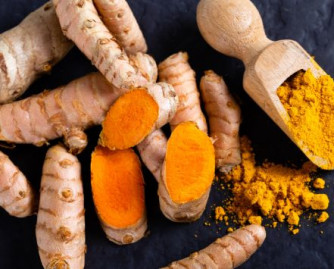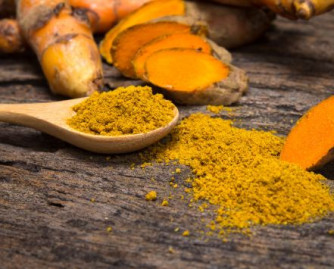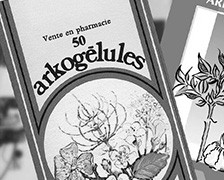Find in our documents the properties and benefits of the plants. These properties are recognized for specific uses and dosages of the active constituents contained in these plants. Their use should always be accompanied by the advice of a healthcare professional.


Plant Use
Turmeric is a plant that has proven effective for joint mobility! Its benefits for joint health are even recognized by the WHO. The antioxidant effect of curcumin is responsible for its efficacy in promoting the health of joints, bones, and tendons.
The main properties of turmeric allow for promoting :
- Mobility,
- Flexibility,
- Joint comfort
Turmeric is considered an exceptional plant due to its diverse properties. In fact, it also helps stimulate liver and bile functions and boosts the immune system.


Scientific Overview
The rhizome of turmeric contains numerous constituents that contribute to its countless properties:
- Curcuminoids, with curcumin being the most prevalent and the primary active compound involved in the antioxidant effect of turmeric;
- Polysaccharides, including arabinogalactans, known as uconanes;
- An essential oil primarily composed of sesquiterpenes and monoterpenes.
Curcumin is poorly bioavailable, but when combined with other substances like piperine, or when integrated into the whole plant (due to the presence of uconanes that may facilitate its absorption), its bioavailability can be improved.
Botanical Description
There are over 110 species of turmeric in the world, with the most studied being Curcuma longa L., also known as "Indian saffron." Turmeric is a perennial plant belonging to the Zingiberaceae family, primarily cultivated in India in warm, humid regions. The plant grows to about 1 meter tall, with long lanceolate leaves and cream-white flowers arranged in a spike.
Turmeric is sought after for its rhizomes, sometimes referred to as "fingers," which reveal a yellow-orange color when broken, due to the curcuminoids (including curcumin) and have an aromatic scent.

Bibliographic References
- Bruneton J. Pharmacognosy, Phytochemistry, Medicinal Plants. 5th ed. Paris, Lavoisier, 2016, Turmeric, pp. 417-423.
- HMPC (Committee on Herbal Medicinal Products). European Medicines Agency. Assessment Report on Curcuma xanthorrhiza Roxb. (C. xanthorrhiza D. Dietrich), Rhizoma. 28 January 2014. EMA/HMPC/604598/2012.
- Lorrain E. Turmeric. In: Grand Manual of Phytotherapy – The New Paths to Health. Dunod 2019, pp. 320-335.
- Rombi M, Robert D. Turmeric – Curcuma longa L. (= C. domestica Val.) Zingiberaceae. In: 120 Plants, 3rd Edition. Monaco: Alpen, 2007. pp. 147-151.





